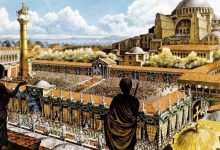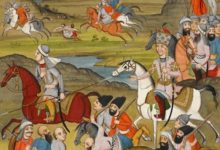How the Sasanian government was formed and its end

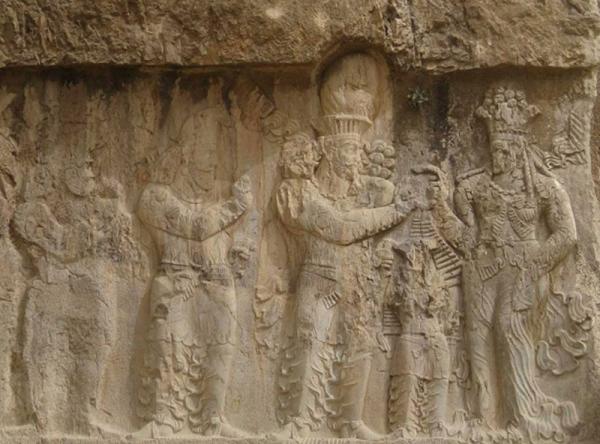 Sassanid period It is known as one of the most important and decisive periods in the history of Iran
Sassanid period It is known as one of the most important and decisive periods in the history of IranSassanid rule
The Sassanid Empire is the last Iranian Empire before the Arab invasion of Iran and the conversion of Iranians to Islam. In the Sassanid era, Iranian civilization reached its maximum prosperity and dynamism in many ways. Iran had a great influence on Roman culture during the Sasanian period. The influence of the Sassanids was not only limited to the borders of Iran, but also reached India, China, Western Europe and Africa. In the Middle Ages, the Sasanians caused the emergence of European and Asian art.
The history of the formation of the Sasanian government
Pars was the seat of government of the main opposition force of the Parthian government. Also, the state of Pars was very important as the origin of the old Achaemenid state. In addition, it was the residence of a number of elders of the country and old families, where these elders had land and were considered to be part of the cavalry force or religious professions. The Sasan dynasty was one of the old Persian dynasties, which were related to the Achaemenids.
Sasan the elder of this family was the head of the Anahita temple in the city of Ishtrak. The location of this city was near Persepolis, the Achaemenid capital, and its temple was considered one of the most important temples. Sasan was dissatisfied with the Parthians, and in general, the state of Pars had resisted against it during the establishment of the Parthian dynasty and succeeded in maintaining its internal independence.
Sasan's marriage with the daughter of the ruler of Pars caused him to have a political position and a religious position. The fruit of this marriage was a son named Babak, who became the ruler of the kingdom of Pars, and the prestige and influence of Sasan's family increased during his rule. Because of this, the last Parthian king named Ordvan was worried; Because he knew that the Sasan dynasty was hostile to the Parthian government and that Ardeshir, Babak's son, was working against the Parthian government. Therefore, his request to Babak was to not appoint Ardeshir to the government of Pars after him.
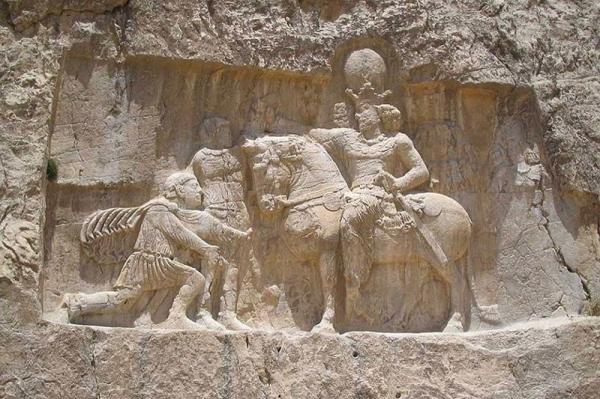 Ardeshir Babakan established the Sassanid government
Ardeshir Babakan established the Sassanid governmentArdeshir was the commander of the cavalry during his father's time. In this way, he became more hostile and opposed to the Parthians and was trying to bring the disaffected elders and religious leaders with him to overthrow the Parthians.
Famous Sassanid kings
The period of rule of Sassanid dynasty was from 651 to 224 AD. Many kings came to power during this period, the most famous of which are Ardeshir Babakan, the founder of the Sassanid dynasty, Shapur II, Shapur I Sassanid, Khosro Anushirvan and Khosro Parviz.
The emergence of Mani and Mazdak
Various social developments took place during the Sasanian history. The famous Iranian prophet, Mani, was one of its examples, who introduced his new religion around 243 AD. He had a lot of expertise in calligraphy and painting and wrote the book “Arjang” in order to convince people to believe in his religion.
One of the Iranian reformers was named Mazdak, whose followers expressed their anger towards the rulers of their time and wanted more social justice to be established. Mazdak and his followers were killed in 529 AD. They had a significant impact on the Iranian society of the Sasanian era.
The officialization of Zoroastrian religion in the Sassanid government
Due to Mani's actions and thoughts, the priests were making more efforts. One of the monks was named Kertier, he was trying to further strengthen the position of Zoroastrian religion. After Shapur I, Sassanid kings were considered as weak people. As a result, Kartier played an important role in the administration of the country's affairs, and Zoroastrian religion became an official religion following his efforts, and as a result of this, the actions of Kartier and a number of other priests in the affairs of the fire temples became more regular and they were more precise. And they did the responsibilities. Mobad Mobadan became so powerful that he was directly involved in the selection of the crown prince. Mobad Mobadan would place a crown on the head of the new king during the coronation.
When the Zoroastrian religion became official; All laws, trials, personal situations and government actions were carried out according to the official religion. Followers of other religions were restricted due to the officialization of Zoroastrianism and they had to follow the laws and orders of the central government in many matters. The act of collecting and organizing the Avesta was one of the other measures taken during the officialization of the Zoroastrian religion.
The fall of the Sassanid government
The disgruntled elders, after killing Khosrow Parvez in prison, in 629 AD, put his son Shirwayh on the throne, but Shirwayh was killed in the same year. In this situation, three people ascended the throne within a year but were immediately deposed or killed. Therefore, with the increase of factions and the struggle for power, twelve people came to the throne during four years, but they did not perform successfully. The state of the country at this time had become very chaotic because the kings were weak and could not repel the attacks of Romans and immigrant tribes. Also, the last Sassanid king named Yazd Gard III was not able to improve this situation.
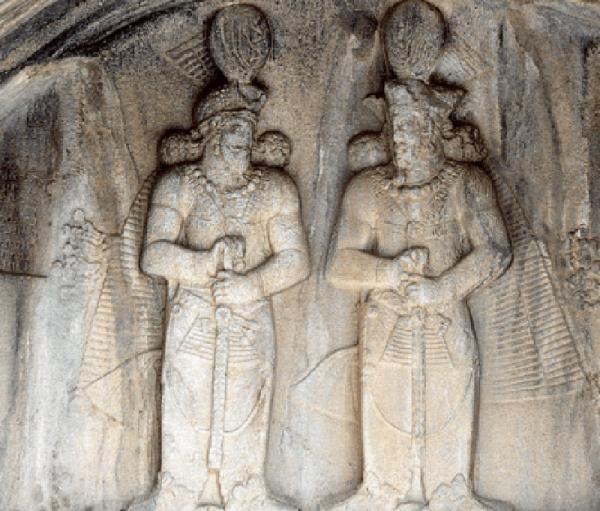 The dynasty of Sassanid kings ruled from 651 to 224 AD
The dynasty of Sassanid kings ruled from 651 to 224 ADThe invasion of the Arabs to Iran during the Sassanid regime
Muslims entered the shrines of Iran around the year 12 AH. Before that, Muhammad Ibn Abdullah sent a letter to Khosrow Parvez and invited him to Islam.
During the Caliphate of Abu Bakr, when Muhammad Ibn Abdullah died; Khaledin Walid went with the Arab troops to the borders of Iran, which was in Mesopotamia. Mushani bin Haritha was one of the heads of the Arab tribes near the borders of Iran, who guided him in the borders of Iran. Before Khosrow Parvez, Hira's government was responsible for defending Iran's borders against the Bedouins, but Khosrow Parvez, by taking over Hira's government, made the Iranian border guards confront the Bedouins. Khaledin Walid defeated the border guards in the attack on Iran.
In the year 14 Hijri, the Arab armies were able to defeat the Iranian army under the command of Rostam Farrokhzad in the Qadisiyah battle. After that, the Sassanid capital, which was the city of Madain, fell. Yazgerd III retreated to the center of Iran. In 21 AH, the Sassanid troops lined up against the Arabs near Nahavand, but were defeated. Yazgerd III escaped and moved to the north of Khorasan. After Iran entered the Arabs, they destroyed all the cities and settlements.
Yazgerd III was killed by a miller in the north of Khorasan in 31 AH, and in this way, the glorious reign of the Sassanid dynasty ended in 31 AH.
Achievements of the Sassanids
Throughout the history of the Sassanids, the kings had implemented an administrative system called “diwan”. After some time passed, the Arab aggressors, with the collapse of the Sasanian Empire, used this system to record and manage their war spoils for several centuries. The Iranians tried to prevent the progress of the Phthalites into Iran and towards the west. Among the cities built in this time, Bishapur and Nishapur can be mentioned. Gandishapur University was established near Shushtar located in the south of Iran and Greek and Indian medicine were taught there.
Among the fields of study, philosophy and wisdom are more important. Non-Iranian scientists traveled to Iran to study and stay, while others became refugees in Iran. Translations were made in order to bring more knowledge to Iran. Iranians made significant progress in fine handicrafts, music and architecture. Some of the handicrafts exported by Iranians to countries such as Japan were glassware.
The Arab attack on the lands of Iran caused the destruction of the noble world, but the Iranian identity remained in its language, tradition and history. The Iranians resisted the new occupiers and held on to what they had – though Iran was in turmoil for two centuries. The Iranian identity did not belong to the Sassanids alone, but to all Iranians, and they tried to preserve this identity by enduring repressions and perseverance.
Arts and techniques of the Sassanid era
Large buildings made of stone and plaster are one of the most important works left from the Sasanian era. Many cities were built in the Sassanid period, which had towers and ramparts and defense facilities. Among these cities, we can mention Bishapur and Firouzabad (Pirouzabad) in Fars province, Gandishapur, Tisfon, and the like. There were fire temples, palaces and castles in these buildings that are still standing, and among them we can mention the Madain Palace near Baghdad, Dokhtar Castle near Firozabad and Fire Temple in Firozabad.
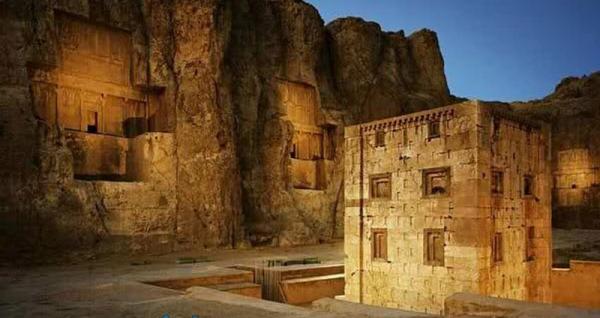 The peak of Sassanid political power was during the Sassanid era of Shapur II
The peak of Sassanid political power was during the Sassanid era of Shapur IIcompilation: Cover culture and thought section
